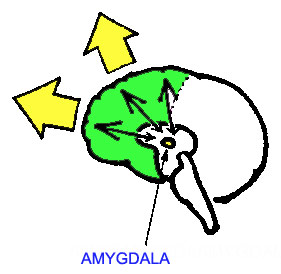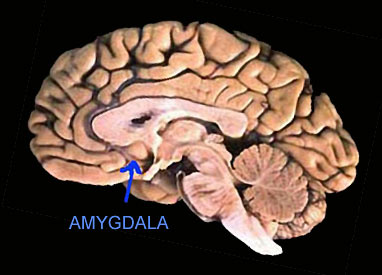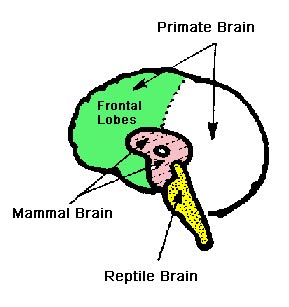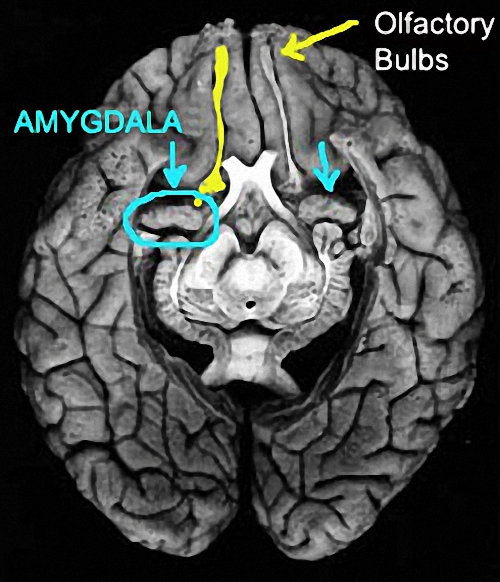| By Robert Schneider
Email: rdschneider@optusnet.com.au
Twenty years ago Dr. James Austin, a neurologist, had a mystical experience. As a result, he did not join a religious order, nor, for that matter, did he begin one. What he did begin was a new field of scientific exploration called neurotheology. In a nutshell, neurotheology is the study of what goes on in the human brain when one is having a peak spiritual experience. While scientists, yogis and philosophers have speculated on the biological aspects of spirituality for centuries, it is only since the advent of sophisticated brain imaging techniques that we have been able to actually see ?pictures? of the brain and thus explore the physical aspects of transcendence. In 2001, a slender volume called Why God Won?t Go Away inspired a cover article in Newsweek magazine and introduced neurotheology to the wider public. When one of the book?s authors, radiologist Dr. Andrew Newberg, hooked up a long-time Buddhist meditator to a SPECT (Single Photon Emission Computed Tomography) scanner, he discovered that a portion of his frontal lobes lit up like a Christmas tree when he was in deep meditation. This led Newberg to surmise that this area of the brain may be partially responsible for feelings of spiritual transcendence. When he tested his theory on a group of Franciscan nuns at prayer, the nuns? scans showed similar results to those of the Buddhist meditator, adding weight to his argument.
The theory that the frontal lobes might have something to do with spirituality has been entertained at least since the nineteen-fifties, when a researcher by the name of TDA Lingo established a brain and behavior research laboratory high in the in the Colorado Rockies. Lingo came home after fighting in WWII plagued by one question: ?Why must I kill my brother in war?? He attended several universities and dropped out shortly before completing his doctorate at the University of Chicago in order to pursue his studies independently. To fund his endeavour, he bought a guitar and started doing the rounds of his local clubs, eventually landing a job as host of a nationally broadcast NBC television variety show. On the last night his show was aired, he looked into the camera and asked if anyone had a mountain for sale. Someone did, and the ?Dormant Brain Research and Development Center? was born on 250 acres of pristine wilderness west of Denver, Colorado, on what he would soon rename Laughing Coyote Mountain. That was in 1957. Lingo remained on the mountain and conducted regular summer ?Brain in Nature? courses for thirty-five years. There was no electricity on Laughing Coyote Mountain. Participants slept under the stars. Lingo typed their lessons on a manual typewriter and hand-cranked copies on an aging mimeograph machine. Keeping things simple was a vital part of his modus operandi. Unconventionality was a hallmark of Lingo?s entire career, a trait that probably has something to do with why his research has been largely ignored by the scientific community to this day. What can?t be ignored is the increasing evidence that TDA Lingo may have been well ahead of his time.
Lingo focussed much of his attention on the amygdala, an almond-shaped structure (the word comes from the Greek word for almond) deep within the brain whose principle function has long been associated with triggering the ?fight or flight? response to danger. For whatever reasons, scientists in Lingo?s era largely overlooked another proven function of the amygdala ? to trigger ecstasy. In laboratory tests with rats in the 1950?s, researchers discovered a phenomenon they called ?kindling.? Given the choice between food and excitation of regions of the amygdala and nearby structures of the brain, the rats chose excitation over food to the point of starvation. While that in itself did not prove that they were experiencing ?rodent nirvana,? as Lingo colourfully put it, it did suggest that whatever they were feeling, it was good. Lingo?s contention was that the amygdala could be consciously controlled and used to ?click on? the pleasure response in the frontal lobes. Eventually, the practitioner would, as Lingo put it, ?pop their frontal lobes? and experience nirvana, samadhi, or what he simply called self-transcendence. Moreover, argued Lingo, the practice was as easy as flicking on a light switch and could be done by anyone, anywhere. That?s a big claim to make for a couple of very small organs, but recent independent research has begun to corroborate his findings. The ?father? of neurotheology, James Austin, saw a critical role for the amygdala in his own experience of transcendence. Neuropsychologist Dr. Rhawn Joseph goes further and says, "These tissues, which become highly activated when we dream, when we pray or when we take drugs such as LSD, enable us to experience those realms of reality normally filtered from consciousness, including the reality of God, the spirit, the soul, and life after death." When psychologist Sara Lazar ?photographed? kundalini yoga practitioner Hari Mandir Kaur Khalsa?s brain with an fMRI (functional Magnetic Resonance Imaging) machine, she discovered that when Khalsa entered a deep state of meditation (as evidenced by the slowing of her breathing to four breaths per minute), her amygdala became active. This pairing of deep tranquillity with an excited amygdala seemed like a contradiction to the researcher who equated amygdaloid activity with emotional distress, but it was exactly as TDA Lingo would have predicted to be the result of ?clicking forward,? as he put it. [Please go to http://www.pbs.org/saf/1310/video/watchonline.htm and click on "Play Video" under the 4th show listed "Just Relax". The amygdala clicking segment is about 1/2 the way through the clip. The clip also features film of monks sitting in a 40 degree unheated hut, covered in freezing dripping wet sheets, which they they dry out with their own body heat, which they consciously raise with brain focus meditation.- N.S.] On the down side of the amygdaloid experience, Joseph LeDoux argues in The Emotional Brain that the amygdala has ?hijacked? our human brain and led to many, if not most, of the mass neuroses and psychoses of modern life. That observation too corresponds with Lingo?s hypothesis: What LeDoux describes is what Lingo called being ?clicked backwards.? While what goes on in the amygdala is actually far more complex than Lingo describes it, his hypothesis, that the organ is instrumental in producing both negative and positive emotions and, more importantly, can be consciously manipulated, is scientifically sound. Centuries before Western science ?proved? that meditation could alter brain wave patterns, practitioners verified it through direct personal experience. Many experienced meditators who have stumbled across Lingo?s work have found ?amygdala clicking? to be a powerful adjunct to their regular practice and at least one professional yoga instructor has made it a regular part of his teaching, with reportedly very positive results. The bottom line is, it?s free and it?s easy, so why not give it a try?
First, a little brain biology is required. The ?triune brain? is a model used to understand basic brain structure and function. In this model, the brain is viewed as consisting of three separate but interconnected parts. The oldest part is the brain stem or reptilian brain, so-called because it processes our most basic survival instincts. A common neurologists? joke defines these as the ?four F?s of reptile brain behaviour ? ?feeding, fighting, fleeing and reproduction.? The reptile brain is entirely ?me? centered. Next on the evolutionary scale is the limbic system or mammal brain. More advanced on the evolutionary scale than the brain stem, the limbic system is capable of emotions and enables us to function within social hierarchies. Unlike the reptile brain, the mammal brain is capable of considering the needs of others. The largest portion of the brain, the primate brain, encases both the reptile and mammalian brains and enables us to perform sophisticated mental tasks like speech and maths. The whole front portion of the primate brain is the frontal lobes. Place your hand across your forehead and you?re grasping your frontal lobes. For many years, the frontal lobes were thought to be largely dormant ? for their mass they seemed to perform few important functions. Gradually, brain scientists came to discover that the frontal lobes are far more important than previously thought. Their contributions to our mental makeup include creativity, imagination, foresight, and the ability to empathize with others. The Tibetan Buddhist meditator in Newberg?s study demonstrated unusually high activity in the left frontal lobe while practicing a technique that involved concentration on loving compassion. In contrast, psychopaths, who by definition lack the capacity to feel empathy or compassion, have been shown to display very low levels of frontal lobe activity in brain scans. The frontal lobes, basically, seem to be the part of the brain that enables us to think outside the box of our selfish bodily needs and desires. Lingo subscribed to the ?dormant brain? theory, reasoning that not only our more noble emotions had their ?home? in the frontal lobes, but that, once activated, they would prove to be where so-called paranormal powers such as intuition and telepathy could be accessed as well. Interestingly, recent studies have suggested that intuition is a testable and demonstrable phenomenon and is traceable to, yes, the frontal lobes. Gautama Buddha argued that happiness is our natural state, but we have lost our way. The Noble Eightfold Path was designed to remove the obstacles to happiness. TDA Lingo argued that the amygdala has been socially conditioned to remain on high alert, thus blinding us to our natural potential for unlimited creative joy. Amygdala clicking was his recipe for giving us back our birthright ? frontal lobes bliss. This is how it?s done: To locate your amygdalae (that?s the plural ? there are two of them, one in each hemisphere), place your thumbs against your ears and middle fingers on the outside corners of your eyes. About 25mm inside your head from where your forefingers naturally come to rest on your temples is where your amygdalae reside. There is an easy way to observe the amygdalae at work. There is a direct connection between the amygdala and the olfactory nerves, or sense of smell. Find something foul smelling ? vinegar or rotten eggs do the trick for most people. Take a whiff. When you instinctively draw back from the source of the smell, your amygdalae are largely responsible for your feeling of repugnance. Now try the same thing with, say, a fragrant rose. What happens? A feeling of pleasure washes over you. Spring is in the air! The amygdalae have done their job once again, orchestrating the neurochemical pleasure response.
Picture your amygdalae sitting there inside your brain, hyperactively warning you to ?fight or flee.? Neurons like bolts of lightning are firing madly backwards, down to your brain stem, screaming, ?Go! Go! Go!? For Lingo, the trick was to get that energy flowing forward, to the ?rose garden? of the frontal lobes. He and his Brain Lab students and colleagues experimented with a variety of methods to reach that goal. In the end, one of the most powerful tools he discovered was simple visualization. Visualize a feather softly tickling the anterior (forward) part of the amygdala, first on one side, then the other. If you prefer, use a pair of feathers and do both sides at the same time. That?s all there is to it. Just remember, gentleness (you?re using a feather, not a cattle prod!) and directing energy forward, into the frontal lobes, are the keys to success. Don?t let the almost ridiculous simplicity of the technique put you off. It really is amazingly powerful! Neil Slade, Lingo?s long-time associate, has been teaching it in classrooms, on radio, and via the internet for years. In his book, The Frontal Lobes Supercharge, he writes, ?It?s the fastest way that you can start clicking forward that we?ve found. It works from the very first minute you try, and is failsafe.? He goes on to advise: ?Keep tickling until you get the desired results and long lasting positive emotional feedback. The effects are progressive and cumulative.? The results may be subtle at first. If you?re stuck in traffic (a great place to try it), you might find yourself relaxing and actually listening to a song on the radio instead of just hearing it in the background. A wave of contentment might pass over you as you realize with a flash that as long as you?re stuck in this traffic jam, you have absolutely no responsibilities. Suddenly you?re on a mini-holiday in the middle of the Sydney Harbour Bridge! Isn?t the harbour beautiful this morning!  Or the results may be more pronounced. People have reported spontaneous kundalini awakenings and other deeply transformational experiences as a result of ?clicking.? Whatever the effect, whether subtle or deeply profound, it is guaranteed to be positive. According to Lingo and an increasing number of contemporary researchers, the pleasure response is an in-built evolutionary reward for accessing our most advanced neurological potential. TDA Lingo referred to the reptile brain as EGGS ? Ego, Greed, Grasp and Suck, while the frontal lobes housed our most advanced and selfless potential. He felt that humanity is at an evolutionary crossroads. We have the choice between remaining stuck in self-destructive egotistical behaviour or evolving into a more loving, cooperative, highly evolved species he dubbed ?Homo Novus? or New Humanity. It is hard to argue with his ideals ? and, increasingly, it?s hard to argue with his science as well. But Lingo remains
an enigma. But maybe we don?t need to be polite. ?Crazy wisdom? has
a long and venerable tradition in most religions. Back in the fifteenth
century, another iconoclastic character, an alchemist who called himself
Paracelsus, managed to offend virtually all the medical establishment of
his time, but is remembered today as one of the fathers of modern medicine.
His real name was Philippus Theophrastus Bombastus von Hohenheim. Because
of his outlandish behaviour, Paracelsus gave the English language a new
word ? bombastic. Like Paracelsus, TDA Lingo used an assumed name (his
birth name was Paul Lezchuk) and also like Paracelsus, his behaviour could
sometimes be described as ?bombastic.? Perhaps, in time, he will also share
the recognition for his achievements Paracelsus belatedly received. In
the meantime, for the open-minded, an appreciation for what he had to offer
may be only a ?click? away.
Back to The
Library From Another Dimension
|



